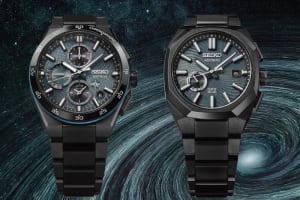Utah’s wild landscapes have long been a playground for outdoor lovers. Whether it’s hiking through pine-scented forests, biking down rugged trails, or casting a line into a quiet stream, the state’s natural beauty is hard to beat. But a new law, effective May 7, is changing how people access some of Utah’s most cherished public lands. In four key counties—Salt Lake, Davis, Utah, and Weber—anyone over 18 must now carry a valid hunting or fishing license to step foot on Wildlife Management Areas (WMAs). This rule has sparked a firestorm of debate, especially among those who don’t hunt or fish but still want to enjoy these spaces.
A Trail Runner’s Unexpected Stop
Kyle Burgess, a Utah resident and avid trail runner, learned about the law the hard way. On July 6, while running along the Bonneville Shoreline Trail in the Timpanagos Wildlife Management Area, about an hour south of Salt Lake City, a game warden flagged him down. The officer explained that without a hunting or fishing license, Burgess was breaking the law by using the trail. Stunned, he took to Instagram to share his experience, saying, “Guess I gotta buy a fishing permit to run the trails. Oh boy.” His post, which racked up hundreds of comments, struck a chord with many who felt blindsided by the new regulation.
Burgess, known online as @cougargkyle after a viral 2020 encounter with a mountain lion, isn’t alone in his confusion. The Timpanagos WMA, like other WMAs in Utah, is managed specifically for wildlife, providing critical habitats like winter range for mule deer. But it’s also a popular spot for trail runners, hikers, and mountain bikers. For these outdoor enthusiasts, the idea of needing a hunting or fishing license to access public land feels like a curveball.
Why the New Law Exists
The law, championed by Utah Representative Casey Snider, aims to address what some see as an imbalance in how WMAs are funded. For years, hunters and anglers have shouldered the cost of maintaining these areas through license fees. These fees don’t just keep the lights on—they’re matched by federal dollars through the Pittman-Robertson Act for hunting and the Dingell-Johnson Act for fishing. This system pumps millions into wildlife conservation, with funds distributed to states based on the number of license holders. More licenses mean more money for protecting Utah’s deer, fish, and other wildlife.
Snider argues that WMAs aren’t like other public lands. “These lands are specifically for wildlife and hunting and fishing,” he explains. “They’re purchased and maintained with hunting and fishing dollars.” As Utah’s population has boomed, so has the number of people using WMAs for activities like trail running and mountain biking. Yet these users haven’t been contributing to the upkeep of these areas in the same way hunters and anglers have. Snider sees the new law as a matter of fairness, ensuring that everyone who enjoys WMAs helps support their conservation.
Faith Heaton Jolley, a spokesperson for Utah’s Division of Wildlife Resources (DWR), echoes this sentiment. “A lot of people see this as having to pay more to access public property,” she says. “But these are very different public lands. They’re for wildlife, and they’re funded by hunters and anglers.” The DWR isn’t forcing anyone to buy a license, but their stance is clear: if you want to use a WMA, you should help pay for its maintenance.
The Debate: Fairness or Overreach?
The new law has split opinions. On one side, supporters argue that all WMA users should chip in for conservation. Wildlife Management Areas aren’t just scenic spots—they’re carefully managed to protect species like mule deer, which rely on places like the Timpanagos WMA for winter survival. Hunters and anglers have long paid for these efforts, and many feel it’s only right that hikers, bikers, and others share the load. After all, healthy wildlife benefits everyone who enjoys the outdoors, whether they’re casting a line or snapping photos.
On the other side, critics of the law are frustrated. Many don’t hunt or fish and feel uneasy about buying licenses for activities they don’t do—or, in some cases, don’t even support. Hundreds of comments on Burgess’s Instagram post reflect this divide, with reactions ranging from support for conservation to outright disdain for the new rule. Some see it as a cash grab or an unfair restriction on public land access. Others argue that the state should have created a separate permit for non-hunters and non-anglers, rather than tying the requirement to hunting and fishing licenses.
Utah’s approach is unique. Unlike states like Montana, which require non-hunters to buy special WMA permits, Utah opted not to create a new license. Why? Because hunting and fishing licenses bring in federal funding, while general recreation permits don’t. By requiring everyone to buy these licenses, Utah boosts its federal conservation dollars, which ultimately benefits the state’s wildlife.
The Bigger Picture: Wildlife and Public Lands
The debate over Utah’s new law touches on a larger question: who should pay to protect public lands? WMAs aren’t your average state parks. They’re designed with wildlife in mind, often serving as critical habitats for animals facing pressure from Utah’s growing population. As more people flock to the outdoors for activities like mountain biking and trail running, the strain on these areas grows. Snider points to examples like unauthorized mountain bike trails built on WMAs in Utah County, which can disrupt wildlife habitats. Research also shows that even law-abiding bikers can impact animals, adding to the challenge of managing these spaces.
Snider insists the law isn’t about restricting access but about ensuring WMAs remain healthy for wildlife. “Everyone should pay to help those places be the best they can be,” he says. “Hunters and fishermen shouldn’t bear the brunt of the cost.” He also hints that the law could expand to other counties if it proves successful, a prospect that’s sure to keep the debate alive.
For now, outdoor enthusiasts in Utah’s Wasatch Front counties face a choice: buy a hunting or fishing license or steer clear of WMAs. For folks like Kyle Burgess, it’s a frustrating new reality. But for those who value Utah’s wildlife and wild places, the law is a reminder that preserving nature comes at a cost—and it’s a cost everyone might need to share.





